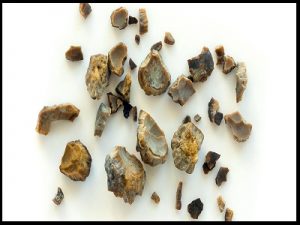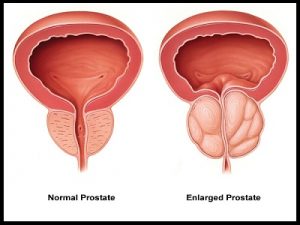What are some gynecological problems?
Relatively every lady experiences a gynecological Issue eventually or the other. Much of the time these disarranges are mellow and effectively treatable, yet some gynecological issues can have genuine ramifications and influence their fruitfulness and personal satisfaction.

Here is the most regular gynecological Problem looked by ladies.
Dysmenorrhea: Abdominal issues and spinal pains are regular symptoms of the period yet a few ladies can experience the ill effects of horrifying agony amid their menstrual cycles. This is known as dysmenorrheal. This is caused by a diminished supply of oxygen to the uterus because of solid withdrawals in the uterus. These spasms turn out to be less difficult as lady ages and by and large is settled by labor. Manifestations of this issue incorporate horrifying stomach torment, torment in the lower back, inward thighs and hips, sickness and free stools.
Ovarian Cysts: Ovarian extensions can be large or small and numerous ladies live with pimples without monitoring it. These growths can be depicted as liquid-filled sac-like structures that create around and on the ovary which fluctuates as far as size and sort. Ovarian sores could conceivably be tumors. Pimples can be a consequence of the development of a follicle or the separating of tissue inside the ovaries. Much of the time, these sores disintegrate without anyone else however they ought to be observed deliberately.
Endometriosis: This is where the uterine tissue becomes outside the dividers of the uterus. This happens generally on the ovaries and fallopian tubes, however, it can likewise create on the cervix, bladder, entrail or rectum. The correct reason for endometriosis is obscure. A few speculations recommend that it is activated by retrograde feminine cycle or the retrogressive stream of menstrual blood into the fallopian tubes. The side effects of this situation incorporate stomach spasms, torment amid intercourse and solid discharges, seeping among periods and stomach related problems.
Poly Cyst Ovarian Disease (PCOD): PCOD is where the ovaries create follicles that form intoGynaecologist and blisters rather than eggs. This prompts an absence of practical eggs and along these lines influences a lady’s fruitfulness. This can likewise cause a state of mind swings and wretchedness. PCOD is activated by hormone changes and shows indications, for example, unpredictable periods, skin break out, male pattern baldness and breathing issues while resting.
Urinary Tract Infection (UTI): UTIs are normally caused by bacterial diseases and can be activated by pregnancy, visit intercourse, diabetes and as a reaction to particular kinds of drugs. The side effects of this situation incorporate stinging and consuming sensations while urinating, stomach spasms, agonizing intercourse and an expanded desire to urinate much of the time.
Amenorrhea
Amenorrhea refers to the absence of menstruation. It is of two types physiological and pathological. Physiological amenorrhea occurs before puberty i.e. before the onset of menarche, during pregnancy lactation and after menopause. Pathological amenorrhea happens when there is any associated disease and is divided into cryptomenorrhea, primary and secondary amenorrhea
Polycystic ovarian syndrome (PCOS)
PCOS is the most popular gynecological problem among ladies of reproductive age. It is a disease manifested by amenorrhea, hirsutism, and obesity-associated with enlarged ovaries having multiple cysts. Patients complain of obesity, menstrual abnormalities, infertility, and hirsutism
Pelvic Inflammatory Disease
It is a disease of the upper genital tract. It is an area of infection of the upper genital tract organs characteristically concerning the uterus, fallopian tubes, pelvic peritoneum, and surrounding structures. Symptoms consist of lower abdominal and pelvic pain, fever, lethargy, and headache, irregular and excessive vaginal bleeding, painful sexual intercourse, abnormal vaginal discharge.
Vaginitis
This refers to the infection and inflammation of the vagina. The most frequent cause of vaginitis among women of the reproductive age group is infection by microscopic organisms. Trichomonas vaginitis is caused by the causative organism Trichomonasvaginalis. There is sudden profuse offensive vaginal discharge, irritation, and itching around the vagina, painful urination, and increased frequency of urination. Candida vaginitis or moniliasis is caused by Candida albicans. There is vaginal discharge associated with severely intense vulvovaginal itching and painful sexual intercourse.
Menopause
Menopause refers to the termination of menstruation due to decreased ovarian activity. These women are more susceptible to osteoporosis. The risk of cardiovascular disease is also higher in postmenopausal women. The characteristic symptom of menopause is hot flushes. A hot flush is characterized by an unexpected sensation of heat following profuse sweating. Apart from hot flashes patient experiences anxiety, headache, insomnia, irritability, and depression. Additional symptoms consist of aching sexual intercourse, lack of sexual drive, vaginal infections and dryness, painful urination, stress incontinence, and recurrent urinary tract infections. The whole changes happen due to estrogen deficiency following menopause.
Leucorrhea
Leucorrhea refers to excessive normal vaginal discharge. This condition might occur physiologically during puberty or ovulation. It also occurs in cases of a prolapsed uterus, retroverted uterus, and chronic pelvic inflammation





